Traffic light: colors in order, description and value. Values \u200b\u200bof light signal lights - MDD lessons which means the colors of the traffic light
The traffic lights at first glance are all very simple and since childhood we all know them. Red - Stop, Yellow - Prepare, Green - Go. This is a very simple rule. In this article we will look at this rule deeper in the framework.
We find all pitfalls hidden in traffic lights. The most interesting will be the signals that are in the additional section of the traffic light and which signals in this section can be. We will look at the 6th chapter of the rules of the road in terms of traffic control through the crossroads of traffic lights.
6.1. Light signals of green, yellow, red and white-moon color apply in traffic lights.
Depending on the destination, the traffic lights can be round, in the form of an arrow (arrows), a silhouette of a pedestrian or bicycle and x-shaped.
Traffic lights with round signals can have one or two additional sections with signals as a green arrow (arrows), which are located at the level of the green circular signal.
Signals of the white-moon light light, in the form of a pedestrian or bicycle and X-shaped in this article we will not consider.
6.2. Round traffic lights have the following values:
- The green signal allows motion;
- The green flashing signal allows motion and informs that the time of its action will expire and the prohibitive signal will be turned on (to inform drivers about the time in seconds remaining until the end of the burning of the green signal, digital scoreboards can be applied);
- The yellow signal prohibits the movement, except for the cases provided for in paragraph 6.14 of the Rules, and warns about the upcoming change of signals;
- A yellow flashing signal allows the movement and informs about the presence of an unregulated crossroads or a pedestrian crossing, warns of danger;
- Red signal, including flashing, prohibits movement.
The combination of red and yellow signals prohibits movement and informs about the upcoming turn on the green signal.
This PDD point describes the round lights of the traffic light. The most common traffic light, which is most often found on the roads.

6.3. The traffic lights, made in the form of a red, yellow and green arrows, have the same meaning as the round signals of the corresponding color, but their action applies only to the direction (directions), indicated by the arrows. At the same time, the arrow resolving the turn left allows the reversal, if this is not prohibited by the corresponding road sign.
The same value has a green arrow in the additional section. The shutdown signal of the additional section means prohibiting the movement in the direction adjustable by this section.

The first thing to pay attention to is that the signals are made in the form of arrows, i.e. The arrow is a signal. The signal is not circular. Under this definition does not fit the traffic lights with a contour arrow and p. 6.3 traffic rules for them are not applicable.
Second important moment, traffic lights made in the form of arrows adjust only Specified directions. For example, if the red arrow is on to the right, then the movement is prohibited only to the right, movement straight, turn to the left and turning this signal are not regulated.
Similarly, with a green arrow signal, but only provided that the arrow is in the main section of the traffic light. Determine, for example, in the dark, the main section of the traffic light or additional is very simple - if the section is additional, then there must be any signal in the main section of the traffic light, if there are no other signals, then this means that the arrow is in the main Sections.
6.4. If a black contour arrow is applied to the main green light signal, it informs drivers about the presence of an additional section of the traffic light and indicates other permitted directions of movement than the signal of the additional section.

This item describes the assignment of the outlet arrow of the traffic signal. We see that the contour arrow can be applied only in the main section, and only on the green signal of the traffic light and, unlike the signal in the form of an arrow, the contour arrow allows the movement only in the specified directions. In other directions, movement is prohibited.
On this we could finish our material if there were not a very common situation in practice. We are often found a traffic light with such a signal:

We have traffic lights with an additional section and a round signal. It would seem according to paragraph 6.3 to move towards the regulated this section forbidden.
But let's figure it out:
- According to paragraph 6.2, the round green signal allows motion in all directions, p.6.3 adjusts the traffic lights made in the form of arrows, in this case paragraph 6.3 is not applicable.
- The additional section may not be visible in the dark, and traffic lights cannot have a different value depending on the time of day.
- The direction adjustable by the additional section is unknown to us, it is only known that it is "other", from the signal in the main section, and in the main section we have a green signal allowing movement in all directions,
- The additional section may not contain a traffic light signal at all, but to be used for example for a timer.
Thus, with a given signal of the traffic light according to paragraph 6.2, the movement is allowed in all directions, if other prohibitions are not established by signs or marking.
 Answer umvd.
Answer umvd. Let's bring a brief summary:
- The circular signal of the traffic light is distributed to all directions,
- A traffic light signal made in the form of an arrow in the main section applies only to the specified direction and does not regulate the movement in other directions,
- The traffic light signal made in the form of an arrow in the additional section applies only to the specified direction and prohibits movement in other directions,
- The circular signal of the traffic light on which the contour arrow is applied only to the specified direction and prohibits movement in other directions.
And so sees the telecasting situation "Main Road" on NTV.
Goods to you without obstacles!
Car movement is a very complex process that requires compliance with the order and rules. The rules are necessary to reduce the number of incidents that occur quite often. One of the useful devices to maintain order is the traffic light.
To understand all the importance of the traffic light, it is enough to remember the case when he did not work for any reason. At this point, all the panic starts and huge traffic jams are immediately formed in all directions. In this case, the adjustor is required, which based on its powers can adjust instead of the traffic light. It does not have to be a traffic police officer. In addition to this organ, there is another number of structures that are endowed with such power.
Three-section traffic lights
Such a kind has the greatest popularity. A three-section traffic light is installed in different positions. In any case, the signals always have one meaning.
The three-section traffic lights have the following signals:
- Red. Such a signal means a prohibition of ride.
- Yellow. This signal means a ban on the continuation of traffic. Some motorists mistakenly believe that yellow color allows them to travel. According to MDD, the movement on such a signal is allowed only if the driver would have stopped only with emergency braking.
- Red along with yellow. The movement at the same time can also be carried out.
- Green. This light gives permission to resume movement or continued it. When you go to the intersection with the green light of the traffic light, you must cross the intersection.
- Green blinking. Such a signal also permits the passage of the crossroads.
Traffic light with an additional section
On some traffic lights you can see additional sections. Basically they are installed at large intersections. In this case, motorists can be moved only when the arrow begins to burn. It should be known that if the arrow is on with red light, you need to skip transport moving from other directions. Available black contour arrow allows you to drive into different directions. It is necessary to prevent an erroneous maneuver with poor lighting, since the driver may not notice an additional section at all.
Traffic light with blinking yellow
If there is no strong stream of cars on the road, the traffic light can be translated into a yellow flashing signal mode. Thanks to this, drivers significantly save their time. At the same time, the yellow signal is not just lit, but flashes with a frequency once per second. The yellow traffic light signal allows movement, but warns about the presence of an unregulated crossroads or a pedestrian transition. Car lubers driving crossroads must proceed from the general rule "interference to the right" (in case there are no regulation signs).
Reversible traffic lights
On roads with reversing motion there is a reversible traffic light. The appearance of the yellow arrow directed to the side means a signal shift. In this case, the driver must go to the specified hand strip. Moreover, the presence of a yellow arrow is not a prerequisite. This signal is necessary for the fastest release of the strip, and also allows you to reduce the time required to change the direction of vehicles.
The green signal, directed down, allows drivers to move along this strip. Such traffic lights can be found in us. Mostly they are located in large cities. They allow at least somehow cope with huge traffic jams.
Traffic light on railway crossing
Such a traffic light is usually located with road signs. He has a red and additionally installed lunar white section. These signals mean the following:
- two in turn of flashing red signals mean that it is impossible to carry out movement. For best efficiency, the call is also used;
- the flashing lunar white traffic light means that the system is in working condition, that is, it is good, and also signals the absence of obstacles to travel through the railway crossing.
Control signals
Adjustment can be carried out by an employee of the authorized service. His signals mean the following:
- Hands stretched to the sides or omitted. With this situation on the part of the left and right side, cars can move directly, and also rotate to the right, and pedestrians have the right to move the road.
- Right hand stretched forward. From the side of the chest, cars can only move right. From the side of the left side, the tram can only go left, and cars are entitled to move in any direction. From the side of the right side or back cars must stand still. Pedestrians in this case have the right to go across the road only behind the authorized employee.
- The adjustor raised his hand up. Such a pose means a ban on the movement of all cars and pedestrians.
The controller can also apply other signals to regulate the movement. For better visibility, the employee has the right to use a rod. For a more easy assimction of the regulator gestures, each driver must assimilate that an employee when adjusting from two sides prohibits movement, and the rest of two permits. If the adjustor is standing back-move is prohibited. You also need to stand on the spot from the right elongated hand. In such a gesture, the employee overlaps the movement of motor vehicles. In case the adjustor pulled out both hands in one of the direction of the intersection, then the movement of standing cars is allowed.
When there are special signs that mean stripping movements or corresponding markups, the driver must carry out the maneuver, following them.
Require vehicle stopping. The authorized employee can gesture a hand or with the help of a loudspeaker. The driver is obliged after such signals immediately stop your car.
For more efficient regulation, the controller can use the whistle. It is also used in the case of a difficult movement caused by, for example, the incorrect work of the traffic light.
According to PDD, the driver in any case must execute the signals of the authorized employee. It is possible that they sometimes contradict the signs and lines of markings at the intersection. That is, in case there is an adjustor at the intersection, then all attention should be directed to it.
After the motorist received an instruction from the employee to stop-he must immediately turn on the turn signal, and without creating no interference, give to the right and stand up. The driver after the stop has the right not to leave his car. It may be in his own will, to save his time.
Each driver, sitting behind the wheel, must comply with all rules of the road. Thanks to this on the roads will be safe and the number of traffic jams will decrease.
Remember that sitting behind the steering wheel, you are also responsible for the lives of other citizens. And if the incident occurs according to your fault as a result of a violation of the law, then you will be a concern for administrative responsibility and deprivation of rights for the period determined by the nature of the violation.
To date, it is very difficult to imagine traffic rules without the main tool for streamlining movement, which is a traffic light. It is intended for adjustment and relief both automotive and pedestrian motion. Distinguish different traffic lights, depending on their functions. Although they are similar to each other, but have certain nuances that need to be remembered.
Traffic light: definition
The traffic light is called an optical signaling device, which is intended to regulate the movement of cars, bicycles and other vehicles, as well as pedestrians. It is used in all global states without exception.
Interesting! Earlier in Japan there was no green light in traffic lights. It replaced blue. But scientists have proven that green is more acceptable for human eye.
Types of traffic lights

The most common are tricolor traffic lights with round signals: red, yellow and green. PDDs of some countries involve the use of orange traffic lights instead of yellow. Signals can be located both vertically and horizontally. If other special traffic lights or additional sections are not provided, then they regulate the movement of all types of transport, as well as pedestrians. Next, we consider various types of traffic lights, from everyday to special.
Classic three-section traffic lights
Such a traffic light has, as a rule, three colors located in order: red, yellow, green - from top to bottom or left to right. Such traffic lights are installed on intersections. They are intended for simultaneous passing of all types of transport in all directions allowed by traffic rules. They are also installed on adjustable pedestrian transitions located between the intersections. It is allowed to install such a traffic light and on the railway crossing in settlements, at the intersection of the road with tramways, before the bike path and the carriageway.You can also see them where there is a narrowing of the roadway to skip the counter transport alternately.

Interesting fact!The first three-section traffic light was installed in Detroit in 1920.
Two-section
Traffic lights with two sections are used to regulate the flow of motion in the territories of industrial enterprises and organizations, as well as during the narrowing of the roadway to organize a single-band reversing transport flow.
Titlephone single-section with yellow light
 Such a single-color traffic light is found on unregulated crossroads and pedestrian crossings.
Such a single-color traffic light is found on unregulated crossroads and pedestrian crossings.
Traffic lights with extra section
Traffic lights can be equipped with additional sectional sections with arrows or arrows contours. They regulate traffic traffic in one direction or another. Such traffic lights are working, according to traffic rules, as follows: The contours of the arrows on all signals of the usual three-color traffic lights mean that its action is distributed only in one specified direction.
 Additional section of the traffic light with a green arrow on a black background by traffic rules allows the passage, but does not provide advantage during the coup. Sometimes you can always meet a burning green signal, which is made in the form of a plate with a solid green arrow. This means on traffic rules that the rotation is allowed, despite the prohibition of traffic lights.
Additional section of the traffic light with a green arrow on a black background by traffic rules allows the passage, but does not provide advantage during the coup. Sometimes you can always meet a burning green signal, which is made in the form of a plate with a solid green arrow. This means on traffic rules that the rotation is allowed, despite the prohibition of traffic lights.
Such traffic lights are installed in those places where the organization of a conflict-free transport movement is necessary on intersections. If a green light comes on at one of these traffic lights, then crossing the intersection, you can not yield the road. In order not to emergency situations, personal traffic lights are located above each band, which show the direction of movement, which is allowed from a specific strip.

Reversible traffic lights
To adjust the movement on the bands of the roadway, reversible traffic lights are used.These are special band control regulators. On such traffic lights can be placed from two to three signals: a red signal in the form of the letter "X" prohibits movement on a specific strip. The arrow of the green color, which is directed down, on the contrary, allows movement. The diagonal arrow of yellow color signals that the mode of movement in the strip is changed, and shows, in which direction you need to move from it.

Traffic lights for controlling movement through a pedestrian crossing
Typically, such traffic lights have only two types of signals: the first one allows, the second - prohibits.As a rule, they correspond to green and red colors. The signals themselves can be of different shapes. Often they are depicted in the form of a stylized silhouette of a person: standing red and walking green. For example, in America, the prohibitive signal is performed as a red raised palm, meaning "stop". Sometimes the inscriptions are used: the Red "Stop" and green "Walk". In other countries, respectively, in other languages.
Traffic lights with automatic switching are installed on highways with a lively motion. But there are cases when you can switch the traffic light by pressing a special button, which allows you to move the road for a certain time. Modern traffic lights for convenience are equipped with a digital table countdown. For non-violent people in traffic lights mounted sound devices.
To regulate traffic tram
The traffic light is usually placed in front of areas with a limited overview, long-term lifts and descents, with a tram depot and before the arrows. Traffic lights for tram there are two types: green and red. They are installed either to the right of the paths, either hang in the center over the contact wire. Basically such traffic lights notify tram drivers about whether the path is busy further or not. They do not regulate the movements of other vehicles and are purely individual. Their work is built automatically.

Traffic signals: travel rules
Round light signals mean the following: the static green signal allows the movement of vehicles or pedestrians, and the blinking of the green signal of the traffic light means that the prohibitive signal will soon turn around, but so far the movement is allowed.
Interesting fact!Residents of large cities generally spend about half a year of life to wait for a susceptible traffic signal.
What does the yellow traffic light signal mean? He warns that the prohibitive signal will be replaced by a permitting or vice versa, and at the time of its action prohibits movement. The flashing of a yellow traffic light signal means that the road area where this traffic light is not regulated. If it is located at the intersection and works in this mode, then the intersection is unregulated. Drivers are guided by those articles of the PDD, which stipulates the passage of unregulated intersections. The static and flashing red signal prohibits movement in any direction.
Burning at the same time red and yellow traffic lights read about what to move is prohibited, and the green light will soon light up. The white-moon traffic light signal informs that the alarm is proper, and you can continue to move. Such traffic lights are installed on the tram and railway tracks.
 Traffic lights that have the appearance of the arrows mean the following: Red, yellow and green arrows mean the same as round signals, only act in a certain direction. The arrow that points to the left allows the reversal, if it does not prohibit the corresponding road sign on priority.
Traffic lights that have the appearance of the arrows mean the following: Red, yellow and green arrows mean the same as round signals, only act in a certain direction. The arrow that points to the left allows the reversal, if it does not prohibit the corresponding road sign on priority.
The green arrow of the additional section also has a similar meaning. If this signal is turned off, or the red contour is lit, it means that the movement in this direction is prohibited. If the main green signal has a black contour arrow, then this means that there are other directions of movement, except for those that the additional section indicates.
What good thing: sign, traffic light or markup?
Road rules imply the following priority: the main is the adjustor, then the traffic light, then the sign and then already marking. Signals of the controller priority traffic signals and road signs. They are mandatory for execution. All traffic lights, except for flashing yellow, significance of road signs. All road participants are obliged to perform the instructions of the regulator even if they contradict traffic lights, signs and markup.
In the capital of Germany there is a traffic light with thirteen signals. In his testimony, it is not easy to figure out just.
In this section, only those points of the traffic rules "Road signs and markup" are given, in which people learning the "rules" are often confused, not understand, etc. That is, only what requires clarification. The rest of the student is able to learn independently.
Let's start with the most important:
- Recall that the traffic light and the adjustor cancel action priority signs . That is, when operating a traffic light or regulator, just ignore signs. When solving tasks, it makes sense to close their palm in order not to be confused.
- Advertigator signals parently Traffic signals. So if the traffic lights contradict the motion of the controller, follow the instructions of the controller.
- and traffic lights, and the adjustor act only on the first intersection of the passage parts.
- Enclosure Allowed only to prevent emergency braking. We are talking about old traffic lights, without table counters and a flashing "green".
- If the car took the crossroad and did not have time to leave it before switching the traffic cycle (for example, when turning to the left, after turning the oncoming), it is obliged to leave it even on a red traffic light signal. The same actions - to leave the crossroads - the driver is obliged to produce and with the prohibiting signal of the regulator.
- If the driving part immediately after the intersection is occupied by the jam (cork), it is prohibited to occupy the intersection. You can turn to free streets or stay in place.
- Traffic light has three states: switched on and works in normal mode switched off And flashes one only yellow, and spoiled. In the latter case, most often he does not burn at all, or not all sections are lit. Or, on the contrary, it burns several at once, or even everything. In any case, a traffic light flashing yellow is considered to be turned off. And if the traffic police with a burning yellow signal is drawn in the traffic police exam, it means only one thing: it is turned off.
Traffic light
- Traffic light rail.
The white-moon flashing signal allows motion, red flashing - forbids.

Through the move, it prohibits the movement of the red traffic light signal at any position of the barrier, lowered the barrier at any signal of the traffic light, as well as the adjustor at any position of the barrier and the traffic light signal. That is, any of the prohibitions overlaps movement through moving.
- Traffic light transport moving along the highlighted band.

Typically, such white-moon color traffic lights are installed for trams. But they can be used for any route transport that moves along the highlighted strip.
The principle of regulation is very simple: the upper signal indicates the direction, and the lower permits movement. If the lower signal does not burn - the movement is prohibited. The burning bottom along with the top average allows the movement straight, the burning bottom along with the left - left. Etc.
In the upper row, several signals can be lit, allowing to move in several directions.
- Reversing traffic light.

Such traffic lights are installed above the stripe Reversing movement.
1. Traffic By reversible lane allowed In the only case: when the green arrow is burning.
2. Red Cross is burning - movement Prohibition.
3. All signals are turned off, the traffic light does not work - movement Prohibition.
4. The yellow arrow is burning - it is necessary to rest on the right non-weaken band - movement Prohibition.
- Traffic light traded three-piece.
Pupils in solving exam tickets, and, even worse, with real driving, sometimes forget that the permissive signal of the traffic light does not always actually permits movement. From my head pops up location of the car on the roadway and limit signs.
In the most general case, with a two-way double-sided movement, the car can move onto a green traffic light in any direction - right, right, left and turn around.
If the bands are larger, it is possible to rotate only from the right strip, but to turn left and turn out - from the left.

The presence of the prescribing sign "Movement is only direct" permits to move onto a green traffic light only in the forward direction.

In the same way, you can not forget to take into account the effect of other prescribing signs ...

... and the signs of special regulations indicating the direction of movement on the strips.
Light signals
Green signal allows motion
Green blinking allows the movement and warns that the signal will soon be replaced with yellow.
Yellow signal forbidden Movement and warns that the signal will be replaced on red or green.
Those who are unable to stop before the crossroads without emergency braking, movement through intersection allowed.
Yellow flashing signal allows traffic and warns that the traffic light is turned off and crossroads unregulated.

Red signal forbidden traffic.
Red simultaneously with yellow forbidden Movement and warns that a green signal will be turned on soon. In some places there are still old traffic lights operating in this mode - after changing the red cycle when switching to yellow, the red signal does not go out, and continues to burn simultaneously with yellow, until the moment is turned on green.

The signals in the form of arrows are similar to the action prescribing signs - allow the movement only in the specified direction.
Red and yellow signals with such arrows warn that the movement will be allowed only in the directions specified by arrows.
- Traffic light with additional sections.

If arrows are applied on the main section of the traffic lights in the form of black contours, this means that in addition to this basic, there is also an additional section, and it will certainly indicate other directions of movement than those that are applied by the contour arrow on the main section.

Recently, traffic lights have appeared with a red ring, meaning that the additional section is present, and that the passage of the direction indicated on it is prohibited.

If the signal is turned off on the additional section, then movement in this direction prohibited.

And only when the signal is on the additional section, the movement in this direction allowed.

With burning red main signal and green supplementary section - the most powerful position, the driver is obliged save the road to all. That is, cars moving from any directions. It is necessary to remember revenge!
We call such a combination of signals Rightnyu Right.
Tram In the situation with the main red and additional green also inferior to the road.
Recall that the tram is inferior to the road only in three cases:
- Under the sign "Give the road"
- when leaving the tram depot,
- And with a burning main red and green arrow.

It also happens that each strip is controlled by a separate traffic light. Then traffic lights as much as the bands on the carriageway.

At some intersections, turning to the right to the red traffic light signal. In this case, this arrow is installed on them, often with an appropriate inscription.

There are traffic lights that "red" In the main section always burnsOnly additional "arrows" (usually turn right) are turned on and off. There are also such traffic lights that are always enabled "green" in the main section, and flow control is also carried out only by arrows. It just needs to know. And it should not be confused.

Abroad there are very wonderful traffic lights, this, for example, installed in Salzburg, in Austria. Sleeve comments.
Adjuster
With the configuration of confusion, the most, and not only among students, but also experienced drivers, and sometimes - and the regulators themselves.
Meanwhile, nothing complicated here - to understand us, as usual, illustrations, and we will add funny count.
Wand only in the right hand, And in no way differently. Even if the adjustor is left-handed.

Provisions at the regulator only three.
Hand up - forbids traffic Everyone, including trams and pedestrians. You can go in the only case - in order to leave the intersection.
Two other provisions are allowed to move, we will look at them below. We only note that the position (2) is hands aside or on the seams - represent the same position of the regulator.

For the tram and the car, with the same regulator gestures, movement is allowed in different trajectories.
With the tram everything is extremely simple, if you use the mnemonic rule "From the sleeve in the sleeve". That is, the tram in one sleeve drives, and from the other - leaves. Hands lowered along the seams are equated with hands placed on the sides. That's all you need to know about the tram.
Now - the car.
It is time of the first count. Remember: Chest, back for the driver - wall.
That is, straight riding "on the chest" and "in the back" is prohibited. This applies to all the provisions of the regulator, except for the first. In the first, as you remember, it is impossible to go at all.
Now the figure is the second - position of the controller with hands on the sides or by seams.

In this position, when the adjustor costs to you sideways (no matter, left or right) - you can go forward and to the right.
From the side of the chest and the back to go to the regulator it is impossible.
Pedestrians can cross the road right. Car, turning to the right, misses pedestrians (This is logical: after all, he crosses their way of following the sidewalk).
Tram, following "from the sleeve in the sleeve," can go only straight.

Fully the picture looks like this. It is impossible to go from the back and chest, from any side - you can, right and right.
The first count helped.
Figure second. The position of the adjustor with the right hand, stretched forward.
For this provision there is another count:
If the rod is twitching in the mouth - -
only the right turn.
If the rod is killed to the right -
You have no right to go.
If the rod looks to the left -
Go like a queen!

Here "the rod is twitching in the mouth." So you can turn right. Only.
By the way, this is the only exception to the first count, which prohibits the riding side of the chest and back. There are no other exceptions.

"Wand looks left." You can go "like the Queen" - where it will do: right, right, left and turn around.

Note, however, that the first reader works here - "Spin for the Wall Driver". Arriving around the regulator from behind, having driving him behind the back, prohibited. And he himself will be scary - who goes there on him from his back?

Now merge all drivers at the crossroads.
It turns out (from above clockwise):
- "The rod kiss to the right" - it is impossible to go.
- "Spin - for the driver of the wall" - you can not go
- "Wand looks to the left" - all directions of the queen.
- "The rod is twitching in the mouth is the right turn."
Everything is extremely simple.
However, when solving tickets and - especially driving, you can not forget about location car on the roadway and road signs.

This car is located in the right strip. And, despite the fact that the Advisor allows you to drive in any direction as the queen, the driver has no right to turn left and unfold from its right strip. He is allowed to go only right and right. And in order to turn left, the driver had to rebuilt in advance to the left strip.

This car can only go straight and left. It can not go to the right of right, as it is standing in the left strip, and you can only rotate from the extreme right. And reversal prohibits sign 3.19
Materials are set forth on the basis of a program developed by teachers.
A modern man in his life surrounds a lot of household items that seem so habitual and unchanged that he does not even think about the fact that they were once out of them, and that someone created them. Saying to fully relate to this habitual device as a traffic light. His story began long ago, and while he acquired a friend acquaintance to us all the appearance, a lot of time passed.
The appearance of the first traffic light
The first device designed to regulate the road with the help of its participants in special signals appeared in 1868. It was then that the building of the English Parliament in London was installed such a device.
Created his railway engineer John Peak Knight, who used his experience with railway semaphores to this, which worked for a similarity similar to the principle.
Naturally, the first copy of the traffic light was not like the modern contemporary fellow. So he managed manually, and its design was the simplest: two semaphore arrows that can freely move in the vertical plane.
In this case, the arrow in the horizontal position indicated the requirement of the stop, and if it raised up to 45 degrees, this meant a warning that road participants would move with maximum caution.
At night, the traffic light used for his work gas lamp with color illuminated, while the red light meant the order to stop, and the green - permission to continue further movement.
The first traffic light in the history of mankind was installed on a six-meter long six meters and was intended to facilitate the transition of the road pedestrians and its signals were not intended for them, but for traveling parts of vehicles.
Unfortunately, the fate of the first traffic light was unfortunately: in 1869, the gas lantern exploded in it and wounded the policeman managed to them. After this incident, it was dismantled and within the next 50 years in London, not a single traffic light was installed.
Creating automatic traffic lights

The main disadvantage of the first traffic lights was the fact that a person was required to manage them. It is clear that under such circumstances it was impossible to provide a lot of streets in cities by traffic lights. Therefore, the inventors sent their efforts to create automatic devices to regulate the road.
It is believed that the first similar system was created by Ernst Sirin, who received it in 1910. At the same time, she used a system of signs with inscriptions "STP" and "PRECEED", which, accordingly, forbidden and allowed the movement. This system did not use the backlight, which made it difficult to use it in the dark time.

In the modern form, the traffic light was created in 1912 by the inventor from Utah Leicester Vair. He already worked on electricity and had two lamps round shape of green and red. True, I did not patented my design of Vair.
However, the massive use of traffic lights on the streets began when on August 5, 1914 in Cleveland, Ohio, the American traffic police company, four traffic lights were installed at once. They were located at the crossroads of 105 streets and Avenue Euclide, and their creator was James Hog.
These devices also had two electrical lamp, while when switching, they made a beep. Managed the work of the apparatus a policeman, located in a special glass booth, standing at the intersection.
The devices, and habitual three-color color schemes, appeared much later, in 1920 on the streets of New York and Detroit. Their creators were John F. Harris and William Potts.
Europe has somewhat lagging behind the United States in the process of "LTOForization" and the first electric traffic lights there appeared in France in 1922, and England was established only in 1927.
In the country of Soviets, the first traffic police was installed on January 15, 1930 in Leningrad. Put it at the intersection of Nevsky and Foundry Prospects. In the capital of the country, this road regulating system was established a little later - December 30 of the same 1930. Placed it on the corner of Petrovka and Kuznetsky bridge. Rostov-on-Don became the third city, equipped with traffic lights.

All these traffic lights were installed in the order of the experiment and after its completion in Moscow alone, by the end of 1933, about a hundred such devices was mounted.
At the same time, traffic lights of that time differed from our usual to us that they used the principle of operation of the mechanical clock, where the arrow indicated not at the time, but on a color field denoting the mode of movement. They were quickly replaced by the electrical lights with the vertical location of the lamps, however, they were not as used to them. The fact is that the location of the colors in this design was not ordinary, but the green was turned on top, then yellow and red colors.
The very word "traffic light" went into Russian in 1932, when he was included in the Greater Soviet Encyclopedia.
Device of modern traffic lights
Modern traffic lights are quite complex devices and consist of actually traffic lights with lamps, road alarm controller, as well as vehicle sensors. They are installed on special pillars and supports at intersections and along the roads.
Controls the modern traffic light computer that chooses and synchronizes the direction of movement according to a constantly changing road situation. In this case, the motion sensors record the vehicles moving along the highway, setting them rhythm of driving using light signals.
In large cities, traffic lights are combined into large automated road control systems that can create such sufficiently complex effects as, for example, a "green wave".
Further ways of development of traffic lights as a traffic control means will lie in the field of artificial intelligence, which, over time, will be able to take on all the functions of regulating traffic flows, completely eliminating the human process.
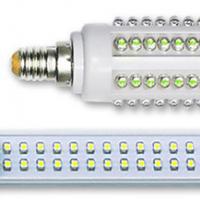 Lighting devices based on alternating current LEDs find their niche and may come out beyond its limits.
Lighting devices based on alternating current LEDs find their niche and may come out beyond its limits.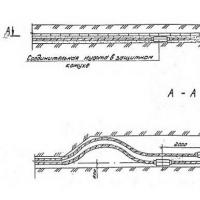 Requirements and rates for cable laying in Earth Scope of application, Definitions
Requirements and rates for cable laying in Earth Scope of application, Definitions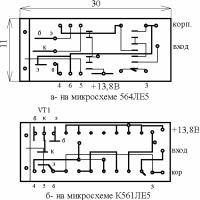 Automobile stroboscope from laser pointer
Automobile stroboscope from laser pointer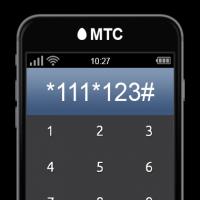 Order 20 UAH to the account. How to Borrow on MTS. Additional information on the service
Order 20 UAH to the account. How to Borrow on MTS. Additional information on the service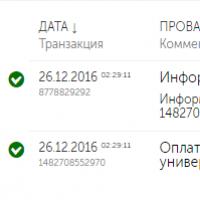 How to check the account replenishment
How to check the account replenishment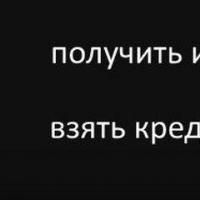 How to get a loan on tele2?
How to get a loan on tele2?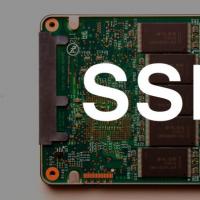 Responsiveness SSD on a miniature board What SSD Drive Buy
Responsiveness SSD on a miniature board What SSD Drive Buy